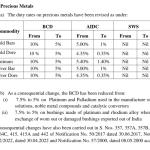Maang Tikka: A Symbol of Elegance and Tradition
IMaang Tikka: A Symbol of Elegance and Tradition
Maang Tikka, also spelled as Tika, is a traditional piece of jewelry worn by women, particularly in South Asia, as a symbol of beauty, grace, and cultural heritage. Explore the significance and diverse designs of Maang Tikka, ranging from traditional to contemporary styles.
Maang Tikka: A Cultural Icon
Maang Tikka holds a special place in bridal jewelry, symbolizing femininity, marital status, and auspiciousness. It is worn on the center parting of the hairline, where it gracefully adorns the forehead.
- Traditional Design: Traditional Maang Tikkas often feature intricate designs with motifs such as peacocks, flowers, or religious symbols, crafted in gold or other precious metals.
- Modern Adaptations: Contemporary Maang Tikkas may incorporate minimalist designs, geometric shapes, or sleek chains, catering to modern fashion trends.
- Symbolic Importance: Beyond adornment, Maang Tikka signifies prosperity, good luck, and the union of bride and groom in Indian weddings.
Gold Maang Tikka Designs: Timeless Elegance
Gold Maang Tikka designs exude timeless elegance and are cherished for their craftsmanship and luxurious appeal.
- Kundan and Polki Work: Traditional gold Maang Tikkas often feature Kundan or Polki (uncut diamonds) settings, adding brilliance and sophistication.
- Temple Jewelry Influence: Some designs draw inspiration from temple jewelry, characterized by intricate patterns and religious motifs.
- Versatile Styles: From elaborate statement pieces to delicate, everyday wear options, gold Maang Tikka designs cater to diverse tastes and occasions.
Maang Tikka Ka Design: Varieties and Styles
Maang Tikka Ka Design encompasses a wide range of styles, each reflecting regional traditions and artistic creativity.
- Chandbali Style: Chandbali Maang Tikkas feature crescent-shaped motifs, symbolizing prosperity and beauty.
- Matha Patti Style: Matha Patti Maang Tikkas extend across the forehead, adorned with multiple chains and pendants, creating a regal look.
- Single Strand Design: Simple yet elegant, single-strand Maang Tikkas consist of a chain with a central pendant, ideal for minimalist bridal looks.
Choosing the Perfect Maang Tikka
When selecting a Maang Tikka, consider factors such as your face shape, hairstyle, and outfit to ensure a harmonious and captivating appearance.
- Face Shape: Choose a Maang Tikka shape that complements your face shape, enhancing your natural features.
- Hairstyle: The placement of the Maang Tikka depends on your hairstyle—whether it’s worn with an updo, braids, or loose waves.
- Outfit Coordination: Coordinate the Maang Tikka with your bridal attire, selecting designs that harmonize with the embellishments and colors of your outfit.
Embracing Tradition with Maang Tikka
Maang Tikka not only enhances bridal beauty but also celebrates cultural heritage and traditions passed down through generations.
- Bridal Tradition: In Indian weddings, Maang Tikka completes the bride’s ensemble, symbolizing prosperity and marital happiness.
- Cultural Significance: Maang Tikka embodies cultural values, traditions, and rituals associated with weddings and festive occasions.
- Family Heirloom: Often passed down as a family heirloom, Maang Tikka connects generations and preserves familial heritage.
Conclusion
Maang Tikka transcends mere adornment—it is a symbol of tradition, elegance, and timeless beauty cherished in South Asian cultures. Whether adorned with gold, diamonds, or pearls, Maang Tikka continues to captivate hearts with its intricate designs and cultural significance.




-150x150.webp)
.webp)






